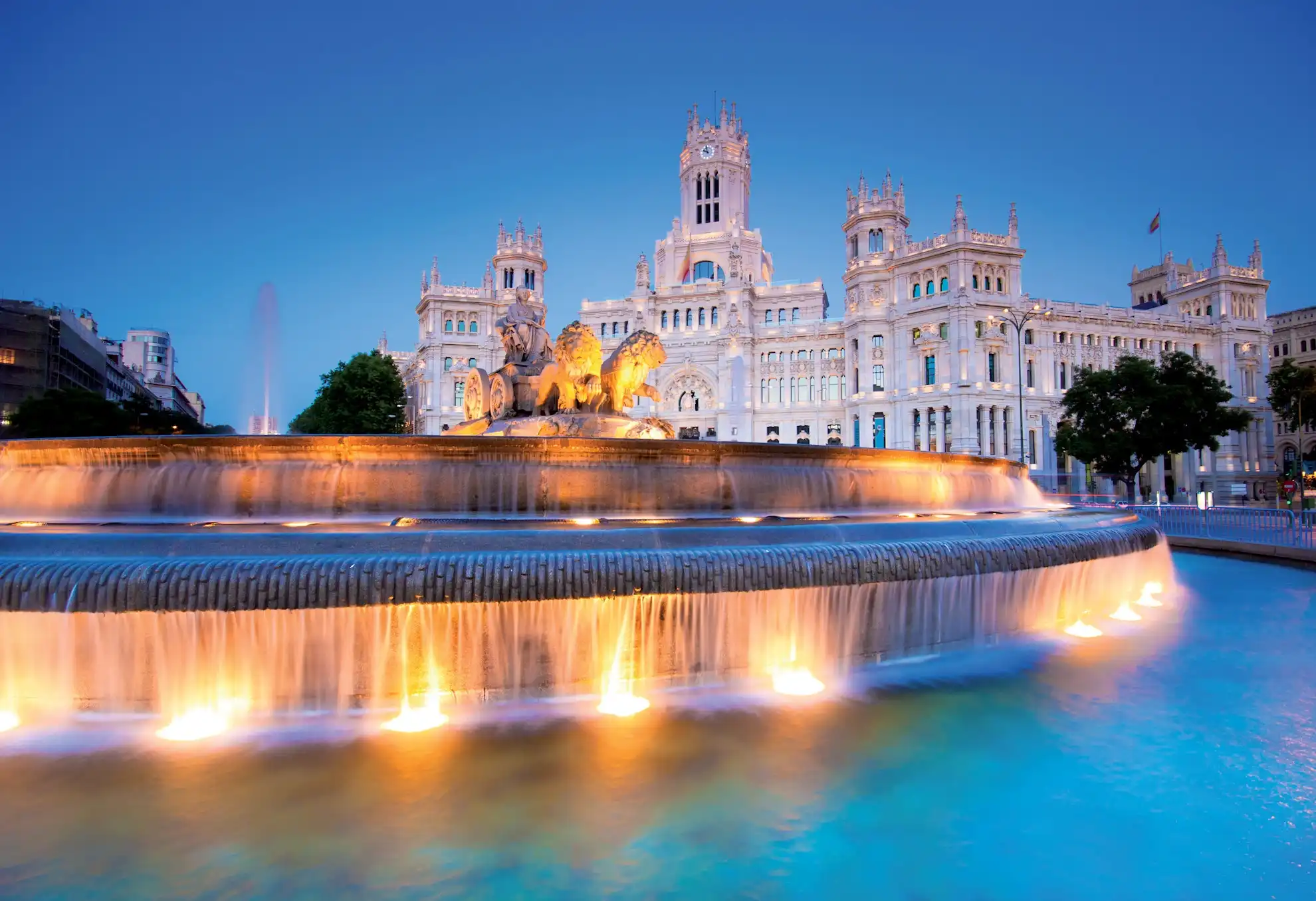Madrid Grand Prix 2026: A New Era for the Spanish Grand Prix
Formula 1 is shifting gears in Spain. Starting in 2026, the Spanish Grand Prix will no longer be held at the Circuit de Barcelona-Catalunya. Instead, Madrid will host the race, introducing a bold new vision for the sport in Spain with the arrival of the Madrid Grand Prix 2026—a decade-long deal set to redefine the fan experience and inject new energy into the F1 calendar.
A World-Class Circuit in Central Madrid
Dubbed the "Madring" circuit, this 5.4 km semi-urban track will wind through the IFEMA Madrid exhibition centre and around Real Madrid's training facilities. Madrid is designed completely by Dromo - an Italian internationally renowned circuit design firm. The same firm behind Zandvoort, Singapore Silverstone, Monza and many others iconic circuits.
Key Overtaking Points
- A high-speed chicane under the M-11 motorway
- Turn 1 braking zone from 300km/h+
- Final sector switchback sequence to promote wheel-to-wheel action
"It's got the tightness of Monaco with the pace of Baku. Strategy and tyre management will be crucial."
F1 Technical Analyst

Experience Madrid in Style with Above + Beyond
Looking to elevate your race weekend?
Our Above + Beyond Madrid Hospitality Package for the 2026 Spanish Grand Prix is designed for those who want more than just a seat. Expect premium access, luxury experiences, and insider moments that take you closer to the action—and further beyond the ordinary.
Spaces will be limited.
Register Your Interest Now →Construction Update
The project is now under active development, led by ACCIONA and Eiffage, with full FIA Grade 1 homologation expected by late 2025. Organisers have assured the public that the track will be completed on time, with sustainability and spectator safety as top priorities.
Why Madrid?
From a logistical, economic, and environmental standpoint, Madrid is positioning itself as the future of European motorsport.
Fan Access & Capacity
- Initial capacity: 110,000/day, scaling to 140,000
- 90% of attendees expected to use public transport, thanks to the venue's direct access to the Metro and rail lines
- Located just 5 minutes from Madrid-Barajas Airport
Sustainability
- IFEMA Madrid already runs on 100% renewable energy
- The event will align with Formula 1's Net Zero Carbon 2030 roadmap
- Green construction, emissions reporting, and waste-reduction protocols are being enforced
Madrid vs. Barcelona: A Tale of Two Circuits
Barcelona has been a technical benchmark, but many drivers and teams have long criticised its limited overtaking potential. Madrid promises not only fresh racing dynamics but a more immersive experience for fans — in and beyond the circuit.
Economic and Cultural Impact
The Madrid Grand Prix is projected to generate €450 million annually for the city. Backed by the Comunidad de Madrid, corporate sponsors, and public enthusiasm, the event will extend beyond the track:
Madrid is ready to make the Grand Prix a citywide celebration.
What the Leaders Are Saying
"Our dream of hosting a major F1 event around IFEMA MADRID has come true. We have the ambition to organise a Grand Prix that will become a reference in the F1 worldwide calendar."
José Vicente de los Mozos, President, IFEMA MADRID
"It's an exciting new chapter for F1 in Spain... blending heritage with innovation."
Stefano Domenicali, CEO, Formula 1
Even Carlos Sainz Sr. and Jr. have voiced support, with Carlos Sainz Jr. named an official event ambassador.
Global Implications and F1 Calendar Shifts
Madrid's entry may influence the broader F1 calendar. Rumours suggest potential calendar reshuffles, with races like Imola or Spa under scrutiny due to weather concerns and rising costs. While Barcelona's future remains uncertain, its contract runs through 2026, opening the door to a possible dual-Spain season—for now.
What's Next?
Madrid is set to become one of the most anticipated stops on the Formula 1 calendar. With world-class infrastructure, a future-facing sustainability plan, and a design built for spectacle, the 2026 Spanish Grand Prix is more than a venue change—it's a statement.
Madrid Grand Prix 2026 FAQs
The Madrid Grand Prix 2026 is the new home of the Formula 1 Spanish Grand Prix, replacing Barcelona as the host city starting from the 2026 season. The race will be held on a newly constructed hybrid circuit around the IFEMA Madrid exhibition centre, combining both street and permanent track sections.
The circuit is situated in the Campo de las Naciones area, northeast of Madrid’s city centre, built around the IFEMA Madrid convention centre and close to Madrid-Barajas Adolfo Suárez airport. This location offers excellent public transport links, making the event highly accessible for both local and international fans.
The Madrid F1 circuit is a 5.47 km (3.4 mile) track featuring 20 turns, a mix of slow, medium, and high-speed corners, and several long straights designed to promote overtaking. The layout blends public roads with purpose-built sections, offering a unique challenge similar to the Miami International Autodrome.
The Madrid Grand Prix circuit is a hybrid, utilizing both temporary street sections and permanent track areas. This combination delivers the excitement of a street race with the safety and speed of a permanent facility, following a trend seen in recent F1 venues like Miami and Las Vegas.
The venue is among the most accessible on the F1 calendar. It is just 16 km from the city centre and five minutes from the main international airport. Around 90% of fans are expected to use public transport, including metro, train, and bus services, with many hotels and accommodations located within walking distance.
The Madrid Grand Prix will initially accommodate 110,000 fans per day, with plans to increase capacity to 140,000, making it one of the largest F1 events in terms of attendance. Fans can choose from general admission, grandstand seating, and VIP hospitality options.
The move is part of a long-term strategy to modernize the Spanish Grand Prix and capitalize on Madrid’s infrastructure, accessibility, and global appeal. The city’s commitment to sustainability, fan experience, and economic impact also played a key role in securing a 10-year contract with Formula 1, running until at least 2035.
The Madrid Grand Prix aims to be one of the most sustainable F1 events. IFEMA Madrid operates on 100% renewable energy, and the event is designed to minimize carbon emissions by encouraging public transport and using recyclable materials. This aligns with Formula 1’s goal to achieve Net Zero Carbon by 2030.
Barcelona’s current contract to host the Spanish Grand Prix expires after the 2026 season. While Madrid has secured the long-term future of the Spanish GP, the future of Formula 1 in Barcelona remains uncertain unless a new agreement is reached or the city hosts a different motorsport event.
Madrid’s circuit offers a blend of street and permanent racing, a high-capacity venue, and a central location in a major European capital. The event is designed to be fan-friendly, sustainable, and integrated with the city’s vibrant culture, making it a standout addition to the F1 calendar.
Ticket sale dates for the Madrid Grand Prix 2026 have not yet been confirmed. Fans are encouraged to register their interest with official F1 ticketing partners and the event website to receive updates as soon as packages become available.
The event is projected to generate around €450 million annually for Madrid’s economy, boost tourism, and create thousands of jobs. The Grand Prix is expected to attract visitors from around the world, further establishing Madrid as a global sports and entertainment destination.
Yes, Madrid previously hosted the Spanish Grand Prix at the Jarama circuit, with the last F1 race in the city taking place in 1981. The 2026 event marks the return of Formula 1 to the Spanish capital after more than four decades.





